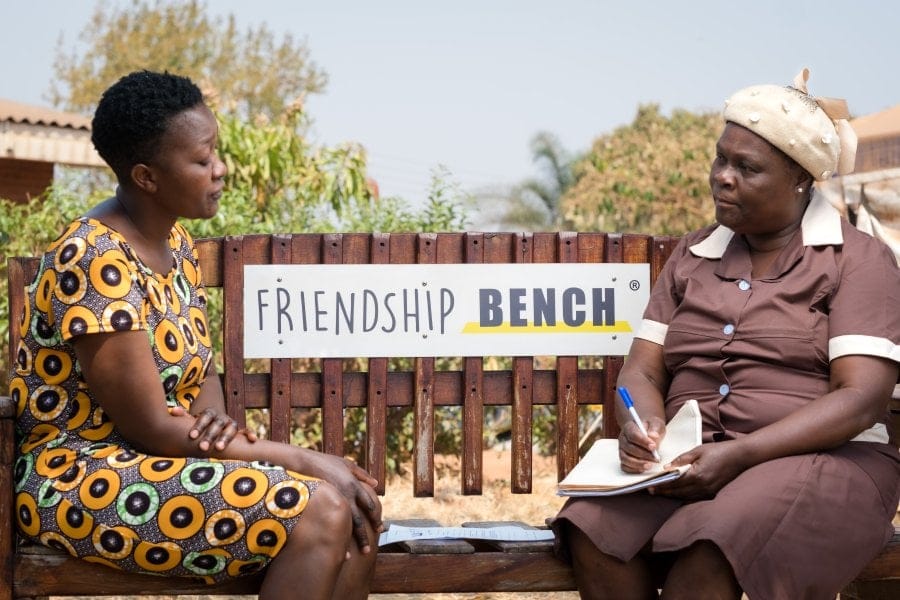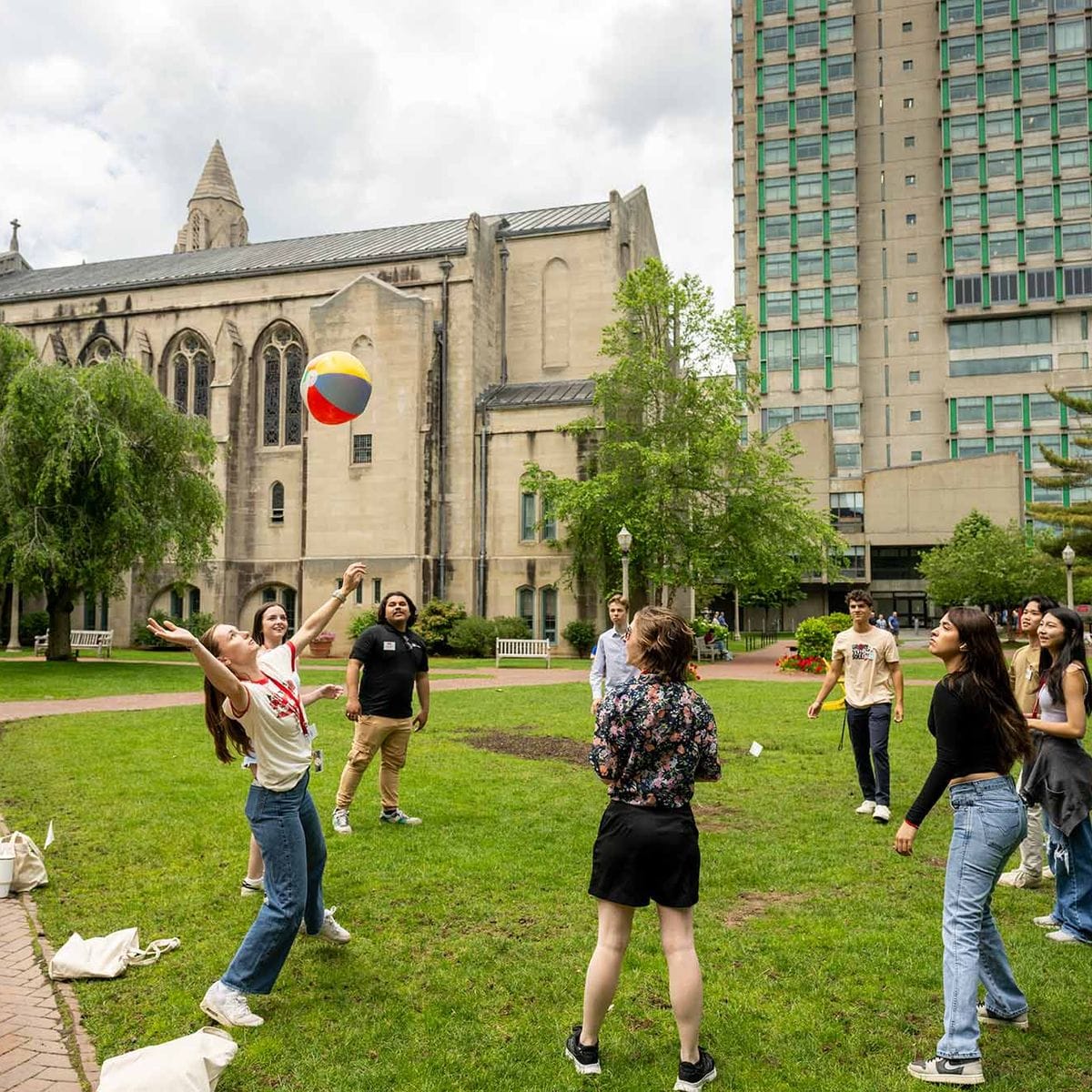Intergenerational Engagement: From Proximity to Purpose

The awesome power of communal care
In the mid-2000s, Zimbabwe was in the midst of a severe mental health crisis. Years of economic hardship, political instability, and social disruption had left millions struggling. Yet there were fewer than a dozen psychiatrists in the entire country, and most were concentrated in the capital, Harare.
Faced with overwhelming need and almost no professional infrastructure, psychiatrist Dr. Dixon Chibanda took a radically simple approach. He trained a group of local grandmothers in basic cognitive behavioral therapy and invited them to sit on wooden benches in public spaces. Their mandate? Listen to anyone who wants to talk.
Friendship Benches became a quiet revolution in public health. Within months, people began to find comfort, perspective, and connection. The model was rigorously evaluated: A 2016 JAMA study found that the Friendship Bench intervention led to an 84% reduction in depression symptoms, outperforming standard care in Zimbabwe’s primary-care system.
To date, in Zimbabwe alone, more than 800,000 people have sat and chatted on a Friendship Bench. And the idea has spread. Fueled by gifts from major philanthropists like MacKenzie Scott, Friendship Benches have since been installed in more than a dozen countries, from Malawi to the US. What began as a low-tech response to a national emergency has become one of the world’s most effective and scalable models for community-based mental health care. And the lesson is profound: major change is possible when ordinary people are empowered to care for each other.

America’s loneliness crisis
America has its own endemic mental health challenges, and many of them spring from the same source: age segregation. Starting around 100 years ago, we began separating the generations by age, ostensibly to boost productivity. Children went to school, adults went to work, and seniors moved to the margins, often in age-restricted housing facilities. This fragmentation has weakened the informal systems of care that once sustained everyday life, and the health consequences are profound:
- Nearly one in three adults over 45 reports feeling lonely, according to the CDC. That number jumps to roughly one in two for older adults.
- Social isolation significantly increases the risk of premature death—by 29%—a health effect comparable to smoking 15 cigarettes a day.
- Among younger generations, rates of loneliness, anxiety, and depression are at historic highs.
In order to stem the tide, we must bring people back together and reestablish the expectation of communal care.
Defining the spaces we build
Other factors related to age segregation have contributed to the loneliness epidemic, from the idolization of single-family homes to remote work to technology. Another highly visible one is the disappearance of what NYU sociology professor Eric Klinenberg calls “social infrastructure,” shared spaces like libraries, parks, places of worship, and other community hubs where people of all ages and walks of life used to congregate, generally for free. A variation is the idea of “third places,” a term coined by sociologist Ray Oldenburg which means not home (the first place), or work (the second place), but places like cafes where people go to mingle and build relationships. Think Cheers, the bar where everybody knows your name. People aren’t forced to go. They congregate there naturally, seeking connection.

A renewed investment in social infrastructure at the civic level would require a massive shift in our socio-economic value system. Right now in Brooklyn, we’re building private family clubs instead of public parks - shared spaces for those with means. To combat these trends, we need to bring more social infrastructure design into all of the spaces we occupy, from shopping malls to housing developments. Klinenberg believes that “the future of democratic societies rests not simply on shared values but on shared spaces” and that they are an antidote to our deep polarization. They are also an antidote to age segregation because, for the most part, they are inherently multigenerational.
But designing these spaces for intergenerational engagement requires some intentional thinking about how age-inclusive various spaces are, and how people across generations engage within them. Matt Kaplan, professor of Intergenerational Programs and Aging at Penn State University, breaks it down with some helpful terminology:
- Monogenerational spaces are designed for a single age group. Think of preschools, student dorms, or senior living communities. These spaces can meet important needs but tend to reinforce separation.
- Multigenerational spaces include people of different ages existing in proximity, but without intentional structure or culture that encourages interaction. Most of the spaces in our world are multigenerational. Think parks, malls, stadiums, and even some apartment complexes.
- Intergenerational spaces go a step further. They are intentionally designed to foster connection across age lines. Very few of these spaces exist.
To move from coexistence to connection, we must design and program our environments to invite shared experience and mutual care. The difference between multigenerational and intergenerational isn’t who’s there, it’s how the space encourages people to engage and interact.
From design to culture: building for cogeneration
In physics, cogeneration is a process where energy systems capture and reuse heat that would otherwise be a wasted byproduct. In social systems, we also have an opportunity to capture the often wasted byproduct of multigenerational proximity - energy, wisdom, and care across age lines. But intergenerational engagement doesn’t happen by accident. It’s cultivated through design, programming, and shared values.
Rekindle’s approach builds on three interlocking layers:
- Design for proximity (multigenerational housing): By designing multigenerational housing, we create the conditions for chance encounters, small acts of care, and daily familiarity. Physical proximity lays the groundwork for emotional closeness. But proximity alone isn’t enough.
- Design for interaction (intergenerational spaces): As Professor Kaplan notes, intergenerational engagement must be intentionally supported through environments that invite organic connection. Like the Friendship Bench, spaces like shared gardens, art studios, and walkable courtyards turn neighbors into collaborators.
- Design for belonging (cogenerative culture): Once physical and social infrastructure are in place, it’s culture that sustains the ecosystem. CoGenerate, a leading organization in intergenerational engagement, defines cogenerative culture as “bring[ing] older and younger people together to solve problems, bridge divides, and co-create the future.” This culture emerges when communities celebrate mutual support as a norm, not an exception. Programming can seed it, but culture cements it: a shared expectation that everyone has something to give.
Defining cultural norms around communal care is fundamental to Rekindle’s vision. We will achieve this through resident onboarding, staff training, transparent community norms, and clear expectations of mutual care. Through intentional design and culture setting, we move beyond spaces of proximity to an ecosystem of shared purpose.
We are a grateful to the many advisors and mentors who took time to speak with us and teach us about intergenerational engagement, including our advisor Marc Freedman, Donna Butts, Paul Irving, Bob Kramer, Professor Andy Carle, Judith Ish-Horowicz, Carolina Campos, Alan Hatton-Yeo, Professor Matt Kaplan, as well as many others. We could not do this work without a multigenerational coalition of thinkers and doers who are united by a simple truth: people of all ages are healthier - and society is stronger - when we engage optimistically across generations.
